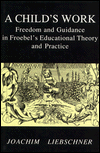|
|
|
 | . index . time line . forum . search . shop |
Key role of teachers in guiding learning processesTeachers are the translators of the cultural heritage and as mediators can guide the child in making the link between the interior and exterior world. The teacher may or may not see the signs and significance of the images made by the child. It is important for the teacher to let the child speak and to ask open ended questions. In this way a dialogue starts between the child and its drawing or clay figure. The dialogue is a living reflection of the work created out of the relation between the child’s interior and exterior world. The intention is for the child to become aware of that relationship between both interior images and their origin and the stimuli of the exterior world: cultural reality and nature. The teacher asks open ended questions and the child gives significance or meaning to the images it has created. Open ended questions are questions where the teacher does not incorporate an interpretation or judgement into the questions, so the child may give an own answer based on the drawing or the clay object. The aim of these questions is to make the child become aware of its personal way of learning and possibilities for development. One of the dialogue’s important characteristics is the perspective out of which the questions are posed to the child. The dialogue may also evoke and make discussible unanswered life questions of the child which until then had not been discussed. It may not always be possible for these questions to be answered. It is even debateable whether all questions should be answered. Often just stating the questions is useful and sufficient. Each teacher in the role of mediator feels out his or her own possibilities in setting boundaries. It is possible that you do not recognise yourself or do not feel comfortable in guiding the child in the dialogue. The practical execution of the exercises in itself already provides the children with so much that as a teacher you can limit yourself to that. The active process of creation and expression on itself is most important as an experiënce for the child. The child knows all its own interior images. Therefore it is important for the teacher to give the child a lot of space with the open ended questions and not to provide his or her own interpretations and judgements. Only if the teacher knows something specific about the child can he/she carefully suggest ‘openly’ to let the child think and say this. Obviously this is a very sensitive issue with regard to confidence, especially within the class. Approach the child as little as possible in the sense of "well done" or "that is beautiful". This does not concur with his/her feelings regarding the drawing as a process, rather than an aim. Johannes Itten Bauhaus: "no esthetical logic". A child does not know this esthetical judgement. They copy this from adults. Experiences with this work method show the children becoming more aware of their own place in relation to the exterior world. The result is more purposeful and conscious acting and an increase in the child’s ability to concentrate. These teaching learning processes can be transferred to cognitive subjects by way of the visualisation. Basically we are dealing with the same elements here; increase of knowledge of the world and matter, gaining own experiences in those areas out of the self, applying knowledge and experiences in new situations and integrating them into the personal feeling, knowledge and acting systems; a continually recurring cycle. . index . time line . forum . search . shop |

A Child's Work: Freedom and Guidance in Froebel's Educational Theory and Practice by Joachim Liebschner Friedrich Froebel said, "A child's play is his work". This book presents a full account of this cornerstone of Froebel's philosophy. A firm believer in guided play as the most important learning tool for young children, Froebel was the inventor of the Kindergarten and the founder of the first teacher training college for women. Buy the Book |
Copyright © 1998-2002 Froebel Web All Rights Reserved. info@froebelweb.com